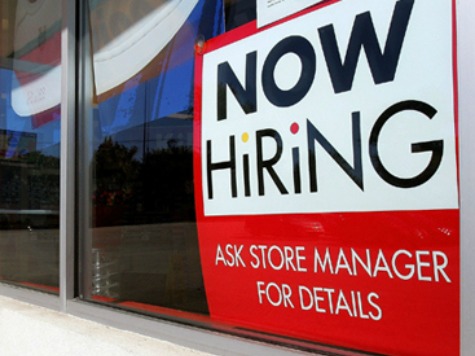
Lee Adler of the Wall Street Examiner just reported that the advance number of “actual” initial unemployment in the United States fell to an eight-year low according to the newest Department of Labor announcement.
The 297,870 initial claims reported for the week ending April 19 is down 20,923, or 6.6%, from the prior week and down 28,394, or 8.6%, from the prior year. Employment growth in the U.S. economy continues to accelerate.
The mainstream media reports the Department of Labor’s “headline” number for new unemployment claims on a “seasonally adjusted” basis each week. This political manipulation usually confuses the public and most Wall Street analysts. The “seasonally adjusted” number showed a major disappointment of 329,000 new claims versus a consensus expectation of 312,000. Bloomberg News blamed cold weather and the timing of Easter for the miss. The Department of Labor said, “The seasonal factors had expected a decrease of 42,668 (or -13.4%) from the previous week.”
January is always the peak of new unemployment claims each year, and April is usually the lowest month. After peaking at over 900,000 in January 2009, new claims have fallen each of the last five years. Thursday’s report just confirms that unemployment claims have been shrinking at about an 8.5% rate for the last two years.
Thursday’s actual total for new claims is the lowest since April 2006, at the peak of the housing bubble. This is not to say that everything is rosy. About 19 million Americans have given up looking for work, had to retire early, or are being forced to work part-time. As Lee Adler points out, as a percentage of total eligible workers in the work force, referred to as labor participation rate, this week was “the lowest since April 2000.”
During the federal government shutdown last October, the Obama administration screamed that cutting federal spending would tank the economy and lead to higher unemployment. It seems that after five years of misery and $10 trillion of failed government stimulus, cutting federal spending is the formula for spurring the private sector capitalism that is driving U.S. economic and employment gains.
If you do not trust the Department of Labor’s employment reports, I suggest you take a look at the one report that is absolutely reliable on a monthly basis, federal withholding tax data. This is the amount of cash deposited each month by employers from employee wages, salaries, commissions, and bonuses. From 0% growth in 2009, the rate recently accelerated to 7.5% this year. There is still a lot of unemployment pain in the economy, but American jobs are definitely on the rebound.
The author welcomes feedback and will respond to comments by readers.

COMMENTS
Please let us know if you're having issues with commenting.